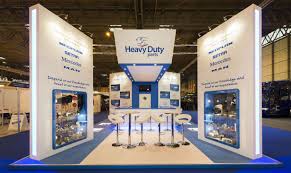The main benefit of using stainless steel fasteners is that they already have free surface protection, meaning they don’t need any additional surface coatings or treatments. This indicates that stainless steel fasteners are highly durable and corrosion-resistant right out of the box. Wherever typical steel fasteners are required, these fasteners can be utilised since they maintain the strength of conventional low alloy steel fasteners. Fasteners made of stainless steel maintain their good corrosion resistance over extended periods of usage, and as a result, they look shiny for a lot longer than similar fasteners made of conventional low alloy steel.
Understanding the chemistry behind ‘the Stainless Steel Fasteners’ ability to fend off corrosion is essential. A metal-oxide layer is formed on the exposed surface of stainless steel as a result of the alloyed Chromium element’s reaction with atmospheric oxygen to form an additional layer of corrosion resistance. Amazingly, if this layer is exposed to enough oxygen in its usage environment, it can occasionally regenerate.
Features
In this way, the oxygen chemically re-bonds with newly exposed, available chromium in the metal to reform the protective surface layer where it has been compromised. This raises another important point- to maximize corrosion resistance of stainless steel fasteners, for maximum protection, it’s important to ensure that the use environment possesses at least some level of available oxygen. In an open-air application, this is an easy thing to accomplish, but it becomes much more difficult for more exotic applications such as within oil or hydrocarbon fluid environments.
Two types of stainless steel fasteners, in general, are most frequently utilized in machine designs. These two metals, which come in a variety of fastener sizes and standards, are 304 stainless steel and 316 stainless steel. Both alloys, as indicated by their names, belong to the 300 family of stainless steels, but due to differences in their chemical makeup, they have different mechanical properties.
Strength And Benefits
Compared to 316 stainless steel, 304 stainless steel is utilized more frequently. According to the aforementioned chart, it contains the elements chrome and nickel. These alloying components offer decent resistance to corrosion and oxidation. To this end, 304 stainless steel is used widely in piping, kitchen equipment, pressure vessel, and auto parts.
Conversely, 316 stainless steel is comprised of similar compositions of Chromium and Nickel. However, 316 stainless steel has an additional Molybdenum as listed in the chart above which is added specifically to protect against salt corrosion. Because of this, 316 will provide a higher level of corrosion resistance in common environments that are known to be more corrosive than simple open-air environments, such as oceanic applications. To achieve this higher degree of performance, the base material cost is greater when compared to 304 stainless-steel fasteners. You can find 316 stainless-steel fasteners in boat construction as well as other machine designs where fasteners may be exposed to exotic corrosive environments.





